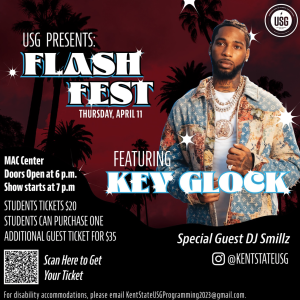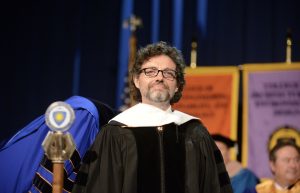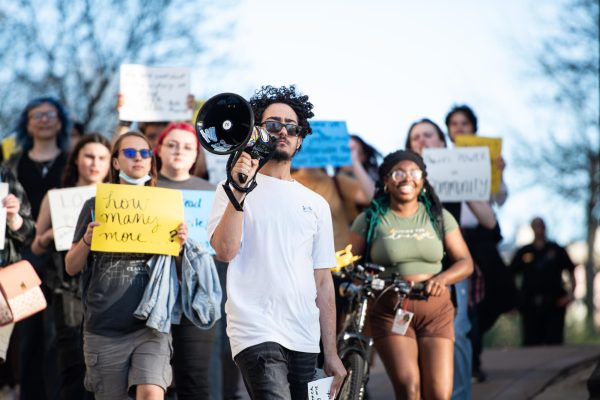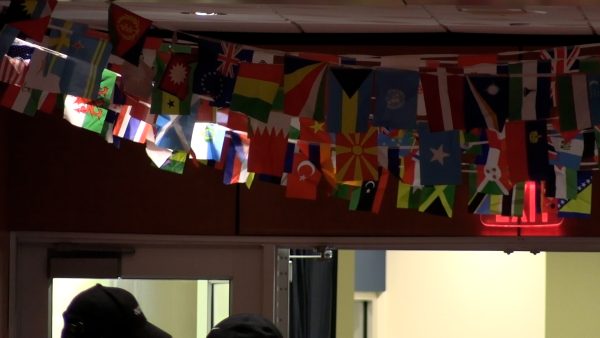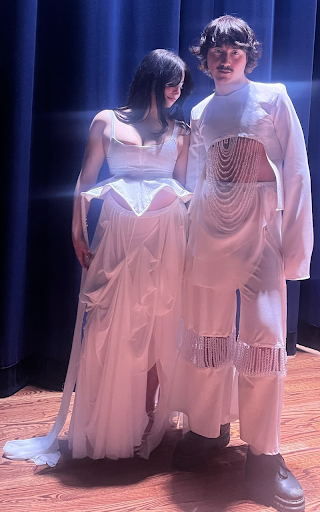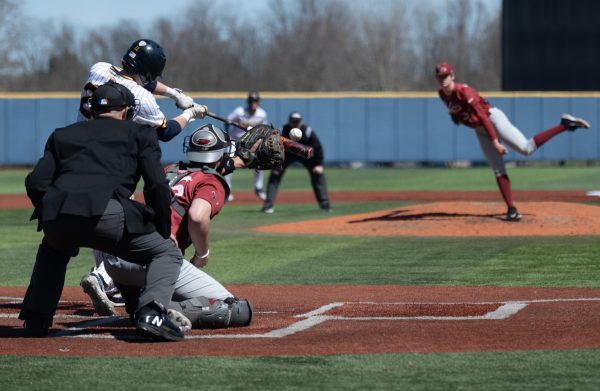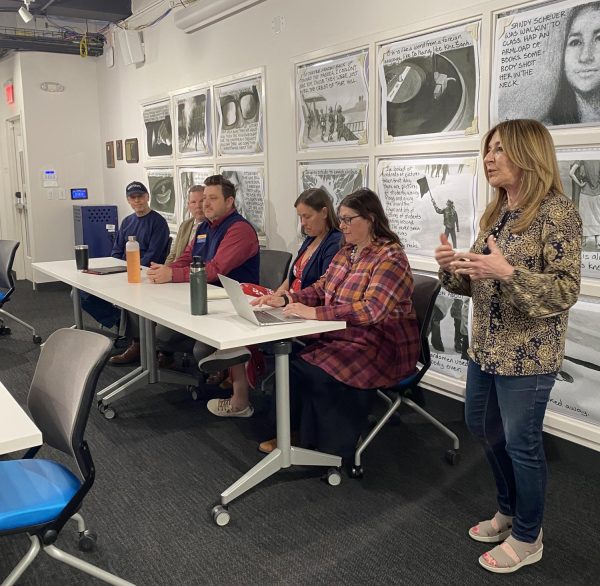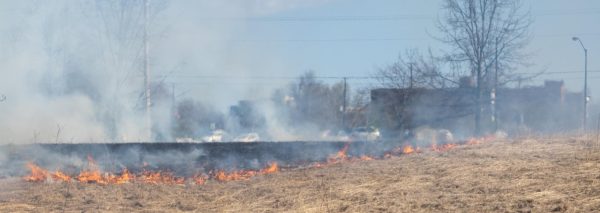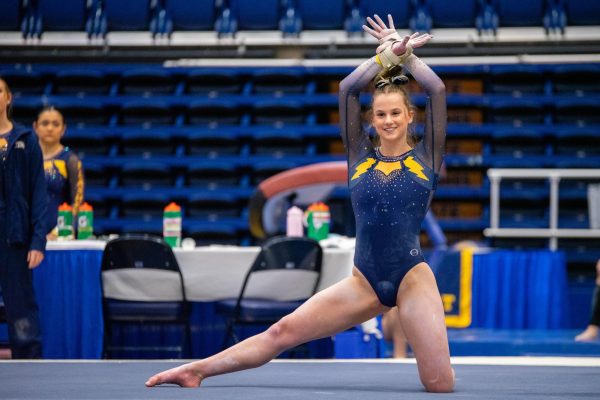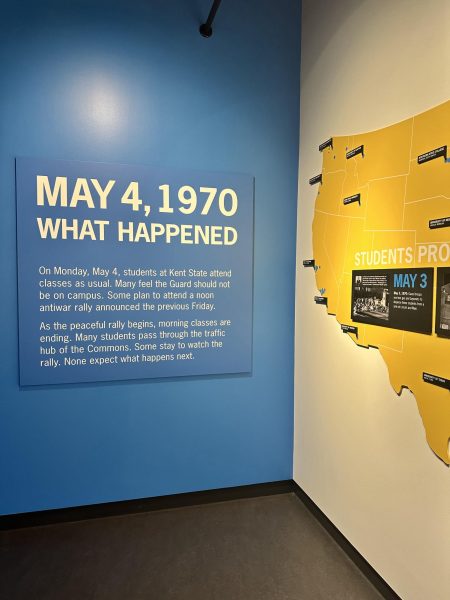Kent State community reflects on 2013 Boston Marathon bombings
April 19, 2015
April 15, 2015 marked the two-year anniversary of the Boston Marathon bombings, and this year, Kent State professors and alumni reflect on their thoughts and experiences of that tragic day.
With more than 26,000 runners in 2013 alone, the Boston Marathon is held on Patriot’s Day and has been taking place since 1897. It is one of the world’s most well-known races and attracts more than 500,000 onlookers each year.
Nicole Gareri, a 2004 Kent State graduate, said she began running as a way to beat her smoking habits.
“My fiancé, boyfriend at the time, was a runner and I was unfortunately a smoker so I would sit on the porch and smoke and watch him go run,” Gareri said. “Eventually when I quit smoking, I decided I wanted to try running, so I did and I kind of switched addictions.”
As her running addiction grew, she began training to run a marathon distance and eventually ran a marathon in Akron in 2011.
“As soon as you decide you’re going to run a marathon, Boston is all you ever hear about,” Gareri said.
When Gareri ran the Boston Marathon in 2013, she said she finished about 20 minutes before the bombs were set off. Extremely terrified and shaken, her first thought was to find shelter with her boyfriend and family.
“I was there with my mom and dad and my boyfriend and just panicking and running trying to find a place to settle down and be safe to find out what even happened,” Gareri said. “It wasn’t until about 10 minutes after it happened that we finally found a store that wasn’t open that let us come inside.”
Gareri said she admired how resilient the city of Boston was after the bombing. She looks forward to running this year but has a few reservations as well.
“Every race I’ve ran since then, it’s always kind of in the back of your head,” Gareri said. “I would hope that no one would ever think to do something terrible or awful again at a place like that.”
Josh Stacher, an associate political science professor, also experienced the Boston Marathon bombings: His hotel was right on the opposite side of Boylston Street where the bombs exploded.
Stacher began running after graduate school as a way to get in shape and eventually began creating a strategic plan to approach running. He ran his first marathon in 2008 and thought of Boston as a goal, he said.
“Boston very much becomes a target because it has these qualifying standards and because it’s the oldest marathon continuously run annually,” Stacher said.
After running Boston in record-breaking heat in 2012, Stacher decided he wanted to go back and try again in 2013. Luckily he was already in his hotel room before the chaos began.
“It sounded like a dumpster dropping on the ground,” Stacher said. “What happened afterwards was there was just an awful lot of helicopters and sirens, and so we knew something major had happened.”
The next day, Stacher left his room to see the area by his hotel blocked off. There was a swarm of media and makeshift memorials set up close to the finish line, he said.
Stacher said it was a very intense experience due to the dynamic of the Boston Marathon and how it is viewed amongst runners and residents. It is different than many city marathons including Chicago and New York, he said.
“People are very, very interested that you ran the Boston Marathon, and they congratulate you when you have your medal on,” Stacher said. “The weekend is really unlike any other marathon that you run in that people celebrate willingly your achievement rather than see you as a hindrance.”
Although he will not be running the 2015 race, he said he is looking forward to running in 2016.
“It’s a nice thing to be able to share with your family who may not always understand why you run so much,” Stacher said.
Joan Inderhees, an associate visual communication design lecturer, said that she plans to run the 2015 Boston Marathon to make up for running in 2012 during the awful heat.
“I wanted to go back again just to see if I could do a better job because 2012 was such a survivors’ march,” Inderhees said.
The crowd that comes out to cheer on runners is very supportive and there’s nothing like it, she said.
“It was amazing to me how people were spending their own money and coming out with bags of ice, and we were just coming up and grabbing ice and shoving it under our hats,” Inderhees said.
Although she did not run in 2013, Inderhees has a few friends who were present on that day.
“As I talk to other people who have run Boston, we all feel pretty possessive about the race,” Inderhees said. “It’s kind of like our race.”
As more than 30,000 runners come up to the starting line on April 20, 2015, there will be many who are running in memory of those affected by the 2013 bombings. Everyone is there for many personal reasons but with one collective goal: to run.
“There’s really nothing like the Boston Marathon,” Stacher said.
Contact Kate Schwanke at [email protected].









